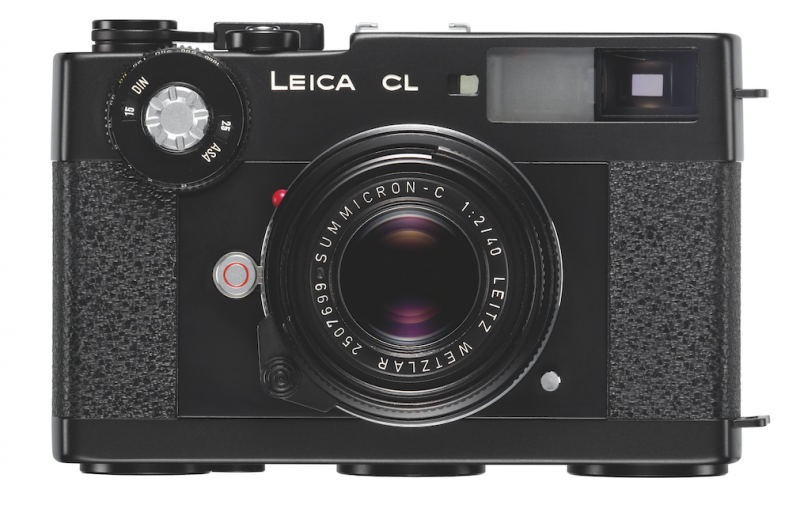Leica CS
Leica CS
April 8, 2014

Leica CL with a Summicron C 40mm f/2, 1971
The Leica CL (short for 'Compact Leica') was introduced in 1973 as a travel camera with interchangeable lenses. Aimed at advanced amateur photographers, the CL fitted in perfectly with the market trend of the early seventies for smaller, more manageable cameras.
The Leica CL was a compact rangefinder camera with TTL exposure metering, a vertically moving focal plane shutter and an M-mount. Simultaneously with the CL, Leica also launched two new lenses specifically developed for this camera – the Summicron C 40 mm f/2 and the Elmar C 90 mm f/4.
In order to ensure a moderate retail price, the CL was manufactured in Japan by Minolta. As a result, it was marketed under several different names: 'Leica CL' within Europe, and 'Minolta CL' or 'Leitz-Minolta CL' in the rest of the world.
Despite a total production of around 65,000 models (manufactured in black chrome), the CL did not represent a great success for Leica, and was discontinued in 1976. Minolta however developed the camera further, subsequently marketing it as the 'Minolta CLE'.
The Leica CL was a compact rangefinder camera with TTL exposure metering, a vertically moving focal plane shutter and an M-mount. Simultaneously with the CL, Leica also launched two new lenses specifically developed for this camera – the Summicron C 40 mm f/2 and the Elmar C 90 mm f/4.
In order to ensure a moderate retail price, the CL was manufactured in Japan by Minolta. As a result, it was marketed under several different names: 'Leica CL' within Europe, and 'Minolta CL' or 'Leitz-Minolta CL' in the rest of the world.
Despite a total production of around 65,000 models (manufactured in black chrome), the CL did not represent a great success for Leica, and was discontinued in 1976. Minolta however developed the camera further, subsequently marketing it as the 'Minolta CLE'.

Leica CL with a Summicron C 40mm f/2, 1971